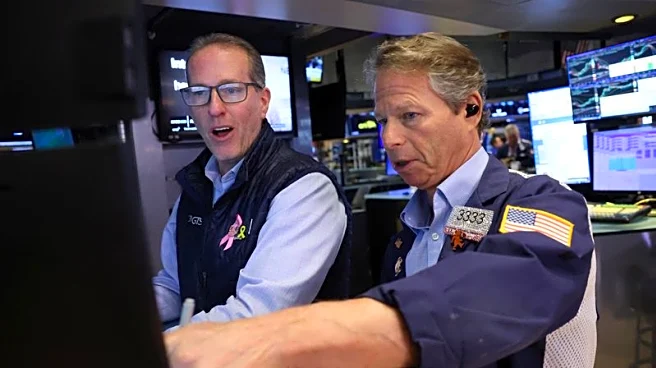What's Happening?
The U.S. financial markets are experiencing volatility as investors react to concerns over artificial intelligence (AI) valuations and the Federal Reserve's interest rate trajectory. The tech-heavy Nasdaq
Composite saw a significant drop of 2.3%, reflecting investor anxiety over the sustainability of AI stock valuations. This comes amid broader economic concerns, including a slowdown in China's economy, which has seen contractions in fixed asset investment and a deceleration in retail sales and industrial output. Additionally, recent comments from Federal Reserve officials have led to a reassessment of the likelihood of a December rate cut. As of Friday morning, markets are pricing in a 52.1% chance of a 25 basis point cut at the Fed's next meeting, a significant decrease from the 95% probability estimated a month ago.
Why It's Important?
The developments in the U.S. markets are crucial as they reflect broader economic uncertainties and investor sentiment. The potential for a Federal Reserve rate cut is a key factor influencing market dynamics, as it could impact borrowing costs and economic growth. The concerns over AI valuations highlight the risks associated with speculative investments in emerging technologies, which could lead to market corrections if valuations are deemed unsustainable. Furthermore, the slowdown in China's economy adds to global economic pressures, potentially affecting U.S. exports and multinational companies with significant exposure to the Chinese market. These factors combined could influence U.S. economic policy and corporate strategies moving forward.
What's Next?
Investors and market analysts will closely monitor upcoming Federal Reserve meetings for any indications of changes in monetary policy. The decision on whether to cut interest rates will be pivotal in shaping market expectations and economic forecasts. Additionally, companies involved in AI and technology sectors may face increased scrutiny regarding their valuations and growth prospects. The ongoing economic developments in China will also be a focal point, as further slowdowns could have ripple effects on global trade and investment. Stakeholders will need to navigate these uncertainties carefully to mitigate potential risks.












